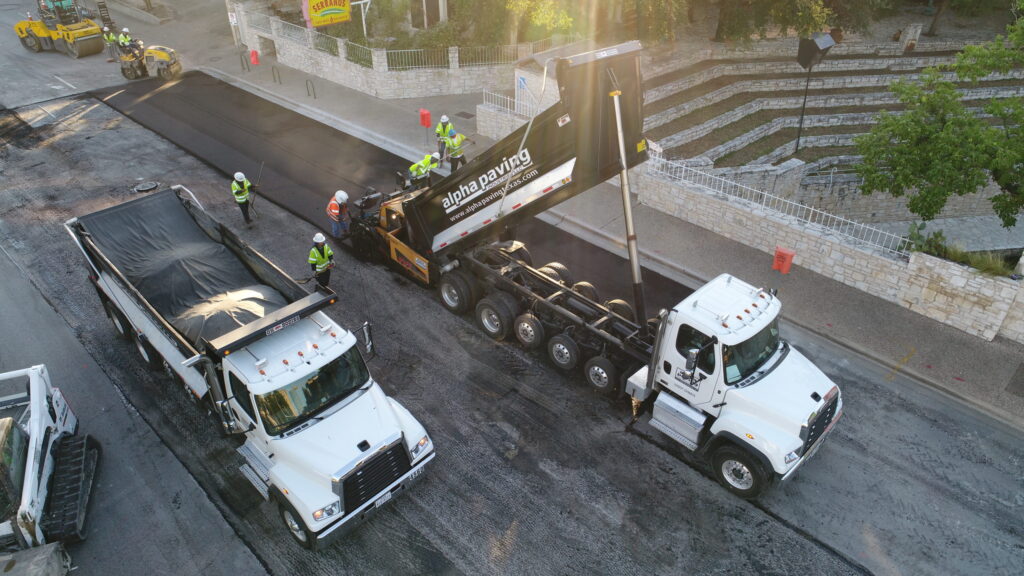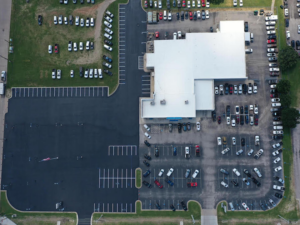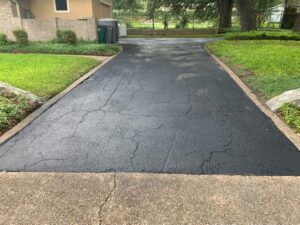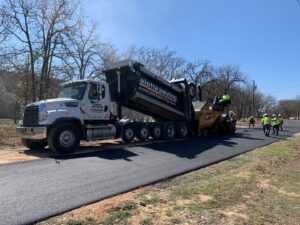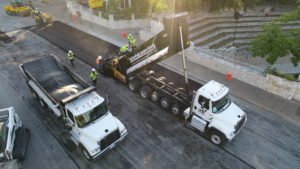
Whether they are constructing a highway, a driveway or a parking lot, asphalt contractors must follow a series of steps to create a long-lasting, safe and attractive pavement. Building an asphalt pavement requires the principles of engineering and science, but at least in part, asphalt construction is also an art form. The contractor’s experience and instincts can contribute to a successful project.
Like all construction trades, asphalt contractors use a variety of terms to describe techniques, tools and materials. Many of these terms are not familiar to the average American, and the issue can be complicated when the same item has multiple names within the asphalt industry. Two terms that are not commonly understood by those outside of the industry are binders and topcoats.
Asphalt Paving – Binder & Topcoat – How Asphalt Pavement Is Constructed
The weight of the traffic that the pavement must bear as well as the number of vehicles that will be accessing the pavement are the primary factors in determining the precise construction specifications. As such, there can be certain differences between projects. For example, if the pavement will be used by only a few bicyclists every day, it does not need to be as strong as the pavement on an interstate highway that bears significant truck traffic. Therefore, there may be fewer steps or more steps involved in the construction of your asphalt pavement than are shown below.
• The soil is prepared. It must be smoothed, graded and compacted. If the soil is unsuitable, it may be necessary to remove and replace it to a sufficient depth.
• An aggregate base is constructed and compacted. The exact depth of the base depends on the intended traffic that the pavement will support.
• Layers of asphalt are installed and compacted. This is where the binder and topcoat come in.
What Is the Binder?
The binder, which is sometimes called the base coat, is a load-bearing course consisting of aggregate and hot-mix asphalt. Because the binder must be strong, it typically contains aggregates that are approximately 0.75 inch in size. In addition to having the strength to bear the load, binder must have the ability to withstand seasonal temperature changes for as long as several decades. Like the aggregate base, the depth of the binder depends on the use to which the pavement will be subjected.
What Is the Topcoat?
The topcoat is the layer of asphalt that is visible on the surface of the pavement, so it is sometimes called the finish course. To create a surface that is smooth and aesthetically appealing, smaller aggregate is used for the topcoat than for the binder. Most topcoats contain aggregate that is slightly smaller than a half an inch. The depth of the topcoat depends on the traffic that the pavement is designed to bear. As you might expect, the topcoat is installed over the binder.
Choose Alpha Paving for Quality Work
Alpha Paving Industries is an Austin paving contractor and we are committed to providing exceptional results and professional service to customers throughout Central Texas. We are an award-winning company with outstanding references. Our services include road construction, street maintenance, asphalt paving, sealcoating, asphalt repairs, parking lot striping, asphalt milling, asphalt overlays, concrete paving, speed bump installation and concrete repairs. We routinely provide our services to a number of municipalities and counties, industrial facilities, shopping malls, apartment complexes, health care facilities, airports, HOAs, office parks, schools, subdivisions, restaurants, retailers and hotels. Requesting a free quote is easy — just submit the online form or speak to one of our knowledgeable, friendly staff members by calling (512) 677-9001.

